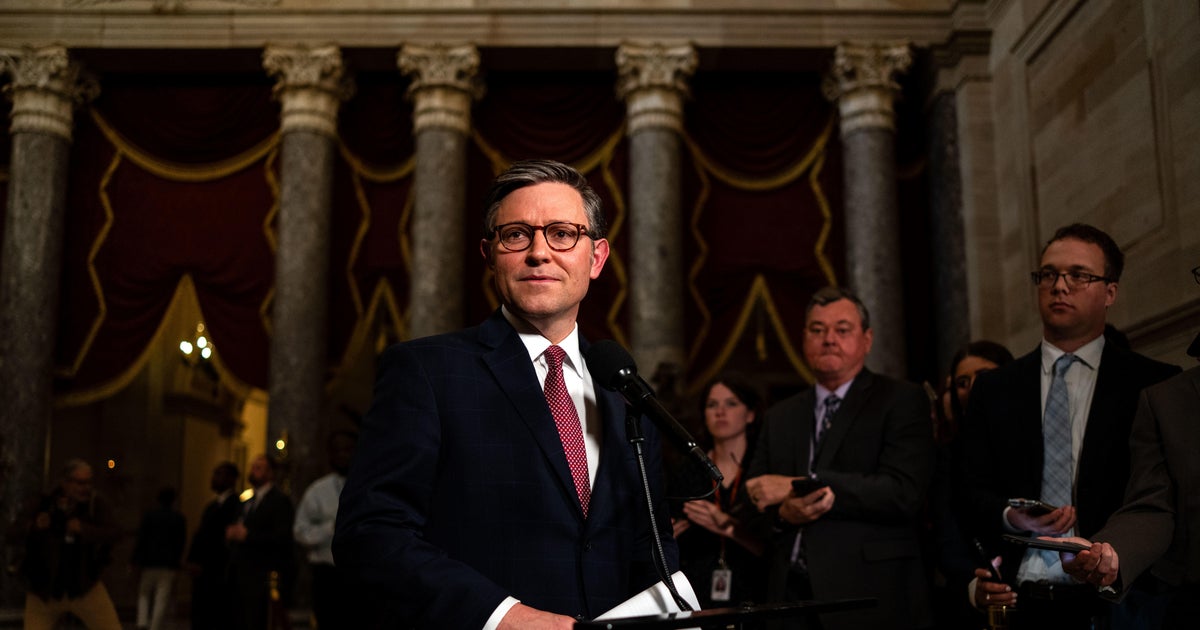These dozen states could move to 100% renewable electricity
Last year, California set the most ambitious energy goal in the nation: reaching 100 percent renewable energy in just over 25 years. This year, as many as 13 other states are rearing to join it.
While the federal government seeks to roll back climate-change regulation, state politicians -- many, though not all, Democrats with newfound majorities -- are signaling they won't wait for the feds to reverse course again.
"Despite the fact that this isn't going to happen on the federal level, there are places around the country, in a lot of the most populated states, where people want this," said Mark Morgenstein, a spokesman for Environment America.
Environment America has launched a campaign calling out nine states to become 100 percent renewable by 2050. Several other states are already on their way toward reaching that goal. Together, they represent 42 percent of the U.S. population and more than a quarter of its economic output.
The push for state legislation comes as renewable energy is growing overall, spurred by consumer demand and favorable economics. By 2050, if no new laws are passed, 31 percent of U.S. electricity will come from renewable sources, according to the Energy Information Administration.
Here are the states that are set to go even further.
The climate leaders: Washington, Massachusetts, New Jersey
Massachusetts, by many measures the bluest state in the U.S., started work last year on the country's first commercial-scale offshore wind farm and plans to double its wind generation in the next two years. Lawmakers in both houses of the legislature have introduced bills to make the state's power 100 percent renewable by 2045.
New Jersey has taken a series of aggressive climate steps since the 2017 election of Democratic Gov. Phil Murphy. The state adopted a goal last year of 50 percent renewable electricity and is in the process of creating an Energy Master Plan, which environmentalists hope will push renewables further.
Washington came close to becoming the first state to tax carbon last year. A bill introduced this year aims to eliminate coal within six years, require 80 percent clean utilities five years after that and make all electricity carbon-free.
Washington has a leg up as the nation's top producer of hydroelectric power, which accounts for two-thirds of all electricity generated in the state. Last year's wildfires across the Northwest also mean the state is deeply familiar with the effects of climate change.
- Record-breaking heat and fires are worsened by climate change, scientists say
- Wildfires may soon be uninsurable risks for homeowners
Former coal producers: Pennsylvania and Illinois
Pennsylvania is the fourth-largest emitter of greenhouse gases in the country (after Texas, California and Florida). The state's economy, until a few decades ago, relied largely on coal. In recent years, it has become a lead generator of natural gas, a coal replacement that still creates carbon emissions, but on a smaller scale.
That's why its recent about-face on clean energy is notable. Last year, a Republican legislator led a bill to put the state on a path to 100 percent renewable energy by 2050. Another Republican is set to introduce it sometime this month, according to PennEnvironment, a state environmental group. The group is hopeful this will be the year it passes.
"We're not California. We're not Hawaii," said David Masur, executive director of PennEnvironment. "When you have a purple state that Trump won, where the general assembly is dominated by conservative Republicans, it's significant and shows that other states with a history of fossil fuel production can lead the way."
Illinois' statehouse is far bluer than Pennsylvania's, but the state is just as dependent on coal. The country's sixth most populated state, it still gets nearly two-thirds of its energy from fossil fuels.
But the new Democratic governor, J.B. Pritzker, has signaled a change in direction. Last week he signed on to the U.S. Climate Alliance, a pact that commits the 18 states in it to the goals of the Paris climate agreement, which the U.S. exited in 2017. Pritzker also campaigned on a goal of 100 percent clean energy.
Solid blue states: Colorado, Maine, New Mexico, New York
All four of these states have newly elected Democratic "trifectas," in which the party controls both chambers of the state legislature and the governor's mansion -- and they're pushing for an energy overhaul.
In Colorado, Gov. Jared Polis has set the most ambitious target of any state -- going to 100 percent renewable energy by 2040, a full five years earlier than California and Hawaii. A recent study found that consumers would save $250 million if the state achieves that goal. Colorado's largest utilty, Xcel Energy, last month promised to go carbon-free by 2050, a move it a said was "motivated by customers who are asking for it."
"Consumers look to their utilities to be good citizens, and that includes protection of the climate," said Andrew Heath, senior director of the utilities practice at J.D. Power. When utilities announce they're shifting to renewable energy -- whether it's a response to law or on their own initiative -- it's met favorably, he added.
Maine is already the top wind-power producer in New England, and new Gov. Janet Mills offers the strongest contrast with her Republican predecessor. Former Gov. Paul LePage routinely drew criticism for his anti-environment moves, including quashing bipartisan pro-solar legislation and putting a moratorium on new wind turbine development.
On her inauguration, Mills set a goal to have 80 percent of the state's electricity come from renewable energy sources. Another Maine legislator is already leading the push for a "Green New Deal" in Maine, which would make the state's energy entirely renewable by 2030.
New York Gov. Andrew Cuomo has called for 100 percent clean energy by 2040, a plan that would require boosting the state's solar, wind, hydroelectric and nuclear resources. The state legislature, which is Democrat-controlled for the first time in 10 years, must approve his plan by April 1.
And New Mexico is eyeing a goal of 80 percent renewable electricity by 2040, which Environment America calls "a first step" to being 100 percent renewable.
Great Lakes states: Michigan and Minnesota
Both these states have Republican-controlled legislatures and Democratic governors, and they have a higher-than-average reliance on coal (getting 36 percent and 41 percent of all electricity from it, respectively). Minnesota environmental groups, in addition to pushing for 100-percent renewability by 2030, are seeking a moratorium on new pipelines in the state. Those in Michigan have set 2050 as the target date.
Both states have a higher-than-average reliance on nuclear power (as do others on this list, like Pennsylvania and Illinois), which is excluded from the planned legislation -- and that could be a problem when it comes to emissions.
Nuclear power has divided environmentalists because, while it emits no carbon, it isn't renewable and has the potential to cause massive devastation. Many clean-energy groups favor phasing out nuclear, but doing so makes it harder to reduce emissions.
"What we're starting to see is [renewable-energy requirements] are increasing market pressure on nuclear power plants, and the emissions increase from the loss of those plants offsets the gain in renewable energy," said Whitney Herndon, a senior analyst at Rhodium.
She added: "In order to get the emissions benefit, you really want an increase in renewables, plus keeping the existing nuclear power there."




